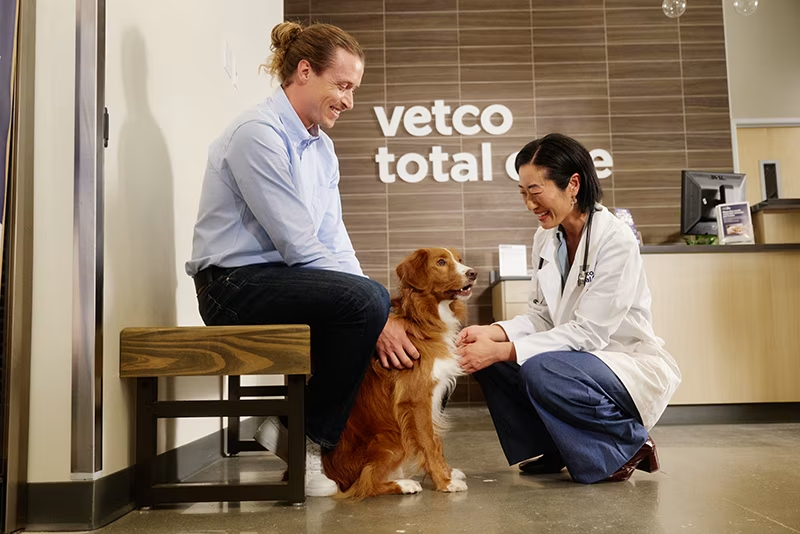Signs Your Dog Might Need canine tplo surgery: Vet-Approved Checklist
Signs Your Dog Might Need canine tplo surgery: Vet-Approved Checklist
Blog Article
Why Animal Rehabilitation Is Important: the Conveniences of Veterinarian Providers for Your Pet dog's Recuperation
Animal rehab is an important element of recuperation for pets dealing with injuries or handicaps. Veterinary services provide critical support through customized rehabilitation plans that deal with specific demands. These plans usually consist of discomfort monitoring, physical treatment, and nutritional assistance. Understanding the various facets of pet rehabilitation can illuminate its significance in improving recuperation results. What details benefits do these solutions supply, and how can they change an animal's recovery journey?
Comprehending Pet Rehabilitation
Pet rehabilitation incorporates a variety of therapeutic practices aimed at restoring the health and performance of injured or impaired pets. This field integrates different techniques, consisting of physical therapy, hydrotherapy, and job-related therapy, tailored to fulfill the particular demands of each animal. Rehabilitation experts evaluate a pet's problem, establishing individualized therapy strategies that might entail workouts to strengthen muscular tissues, enhance mobility, and improve general wellness. The process not just concentrates on physical recovery however also addresses emotional and behavioral elements. Animals typically experience tension and anxiety complying with an injury, making psychological health and wellness considerations vital in rehabilitation. By creating a helpful atmosphere, specialists can assist animals reclaim their confidence and adapt to their new conditions. With routine sessions, animals can experience significant renovations, inevitably bring about a much better lifestyle. Overall, understanding animal rehab highlights its significance in advertising recovery and enhancing the bond between pet dogs and their proprietors.
The Function of Discomfort Management in Recovery
Exactly how essential works pain monitoring in the recovery of injured animals? It plays a vital role in promoting healing and improving the overall wellness of animals. Correct pain monitoring not just eases discomfort yet also advertises movement, allowing pets to take part in recovery tasks needed for healing. When discomfort is effectively taken care of, pets have a tendency to respond favorably to treatment, bring about quicker rehabilitation outcomes.Veterinarians use various approaches to assess and resolve discomfort, including medicines, acupuncture, and alternative therapies. By tailoring discomfort management techniques to the specific needs of each pet, vets can ensure that pets continue to be tranquil and participating throughout their recovery journey. Furthermore, minimizing pain helps in reducing anxiety, which can prevent healing and lengthen recuperation times. To summarize, effective pain monitoring is vital for enhancing the recuperation procedure and boosting the quality of life for damaged pets.
Physical Treatment Methods for Family Pets
Many physical treatment techniques are offered to aid in the rehab of pet dogs recuperating from injuries or surgeries (tplo surgery). These methods can improve mobility, alleviate pain, and advertise recovery. Therapeutic workouts, as an example, aid reinforce muscular tissues and enhance joint function, permitting animals to restore their physical abilities progressively. Manual therapy, that includes massage therapy and mobilization, can minimize tension and boost circulation, contributing to a faster recovery.Other strategies such as passive variety of motion exercises encourage joint adaptability and lower stiffness. Furthermore, electrical excitement therapy might be used to promote nerves and muscles, promoting recovery and pain relief.Veterinary specialists typically tailor these strategies to each family pet's specific requirements, making certain an extensive rehab strategy. By executing these physical treatment techniques, animals can experience enhanced high quality of life and a much more successful healing from their conditions. The assimilation of these techniques right into rehab programs is necessary for optimal recuperation outcomes
Benefits of Hydrotherapy for Rehabilitation
Hydrotherapy uses substantial benefits in pet rehabilitation, specifically in enhancing flexibility. This water-based therapy advertises discomfort alleviation while supplying convenience to wounded or recuperating animals. Additionally, it facilitates strength-building exercises that add to overall physical healing.
Enhanced Movement Renovation
As animals recover from injuries or surgical procedures, improved flexibility usually comes to be a primary objective of their rehab. Hydrotherapy serves as an important tool in accomplishing this purpose. Through water-based exercises, pets can participate in low-impact motions that facilitate joint flexibility and strengthen muscular tissues without the anxiety of weight-bearing tasks. The buoyancy of water sustains their bodies, permitting for raised series of movement and flexibility renovation. In addition, hydrotherapy urges far better balance and coordination, which are necessary for recovering regular movement patterns. Routine sessions can bring about significant progression in an animal's physical capacities, ultimately enhancing their lifestyle. This method not just aids in healing yet likewise advertises a more energetic and satisfying way of life post-rehabilitation.
Pain Relief and Convenience

Remedy for discomfort is a vital element of pet rehabilitation, and hydrotherapy significantly adds to this process. By utilizing water's buoyancy, hydrotherapy minimizes joint stress and anxiety and eases pain throughout activity. This therapeutic approach provides a calming atmosphere where family pets can participate in gentle exercises without the full weight of their bodies impacting their recuperation. The cozy water boosts blood flow, advertising recovery while likewise urging relaxation. Furthermore, hydrotherapy sessions can be tailored to satisfy the certain requirements of the animal, ensuring perfect comfort. As pet dogs experience reduced discomfort and increased comfort degrees, their total willingness to join rehabilitation tasks frequently enhances, resulting in a more reliable healing trip. Hydrotherapy offers as a critical tool in improving pain alleviation and comfort throughout recovery.
Toughness Building Exercises
Strength-building exercises play an important role in the rehab procedure, with hydrotherapy offering special advantages. This type of therapy uses water resistance to boost muscle strength without putting too much pressure on the joints. The buoyancy of water sustains the family pet's weight, enabling for more secure movement and enhanced variety of motion. In addition, hydrotherapy can improve cardio health and promote overall fitness, assisting in quicker recuperation from injuries or surgical treatments. The regulated setting also minimizes the threat of reinjury, making it an ideal alternative for animals calling for rehabilitation. Regular hydrotherapy sessions can cause visible renovations in mobility, stamina, and endurance, eventually improving the pet's high quality of life and capacity to go back to normal tasks.
Significance of Personalized Rehab Plans
Customized rehabilitation strategies are crucial for resolving the special demands of each pet, making certain customized treatment methods. These strategies enable effective development tracking and needed modifications, promoting ideal healing outcomes. Additionally, a holistic approach can enhance the total health of the pet, advertising an extra thorough recovery experience.
Individualized Therapy Approaches
While several rehab programs take on a one-size-fits-all approach, the distinct needs of each pet require customized therapy plans for excellent healing. Custom-made rehabilitation plans take into consideration various elements, consisting of the animal's types, age, case history, and particular injuries or problems. By tailoring interventions, veterinarians can deal with each family pet's unique obstacles, taking full advantage of the efficiency of the rehabilitation procedure. Individualized plans may incorporate different methods such as physical treatment, hydrotherapy, and healing exercises, ensuring that the treatment lines up with the pet's capacities and progression. Furthermore, customized approaches promote a more powerful bond between the animal and the caretaker, advertising a much more interesting and encouraging recuperation environment. Inevitably, customized therapy is important for attaining finest feasible outcomes in pet rehab.
Progress Monitoring and Adjustments

Holistic Healing Methods
All natural healing approaches are crucial for efficient pet rehab, as they stress the importance of personalized therapy strategies tailored to every animal's details demands. This technique considers the physical, psychological, and environmental factors influencing recovery. Personalized rehab plans might include a mix of physical treatment, nutritional therapy, and behavior alterations. By attending to these varied aspects, vets can boost the total health of the animal and promote a much faster recovery. Such tailored strategies facilitate a much deeper understanding of the animal's one-of-a-kind challenges, leading to much more efficient treatments. Inevitably, holistic healing methods not only enhance physical health and wellness but additionally add to the animal's psychological and emotional security, making sure a thorough recovery experience.
The Impact of Nutrition on Recuperation
Nutrition plays a necessary function in the recovery procedure for rehabilitating animals, frequently determining the speed and efficiency of recovery. A well-balanced diet plan provides the required nutrients that support cells repair work, enhance the immune system, and enhance overall vitality. Protein is particularly vital, as it helps in muscular tissue rebuilding and healing from injuries. Vital fats, vitamins, and minerals likewise contribute to reducing inflammation and advertising optimum cellular function.Veterinarians often emphasize the importance of tailored nourishment strategies, considering each animal's specific needs, age, and health and wellness condition. Appropriate hydration is equally crucial, as fluids assist in nutrient absorption and help in cleansing. By making sure that pets get ideal nourishment, caretakers can substantially boost their possibilities of a successful recuperation, causing much better long-term health and wellness results. Ultimately, nourishment acts as a fundamental aspect in the rehabilitation journey, supporting pets in gaining back stamina and durability post-injury or ailment.
Success Stories: Pets That Flourished After Recovery
Successful rehabilitation tales abound, showcasing the durability of animals who have conquered substantial difficulties. Take, as an example, Bella, a golden retriever that endured extreme injuries from an automobile crash. With dedicated veterinary care and a comprehensive rehabilitation program, she reclaimed her wheelchair and went back to her lively self, much to her owner's delight. In a similar way, Max, a senior feline identified with joint inflammation, experienced amazing improvement with a combination of physical therapy and discomfort management. His newfound dexterity permitted him to appreciate his favorite sunbathing places again. Another inspiring instance is that of Coco, a rescued greyhound who got rid of stress and anxiety with habits adjustment and socializing methods, allowing her to grow in her new home. These success stories exhibit the transformative power of pet rehab, emphasizing that with the best support, pets can not just recover but lead satisfying lives, enhancing the bonds they share with their family members.
Regularly Asked Inquiries
How much time Does the Recovery Process Commonly Take for Family Pets?
The rehab procedure for animals generally varies based upon the injury or condition, ranging from a couple of weeks to a number of months. Specific progression, treatment kind, and dedication to workouts substantially influence the total period of recuperation.
Are There Any Kind Of Dangers Related To Pet Recovery?
Animal recovery might carry threats such as worsening of injuries, incorrect strategies bring about pain, or not enough monitoring throughout recuperation. These factors can impede development and affect the total efficiency of the rehab process.

Can All Pets Take Advantage Of Rehab Solutions?
Not all animals may require recovery, however several can benefit considerably. Recovery solutions can improve mobility, relieve pain, and enhance overall health, particularly for those recovering from injuries, surgeries, or chronic problems.
How Can I Prepare My Family Pet for Recovery Sessions?

What Indications Show My Animal Needs Recovery?
Indicators showing an animal might need rehab include difficulty walking, hopping, lowered activity levels, reluctance to jump, or indications of discomfort. Observing these actions can prompt proprietors to look for specialist evaluation and treatment for their animals.
Report this page